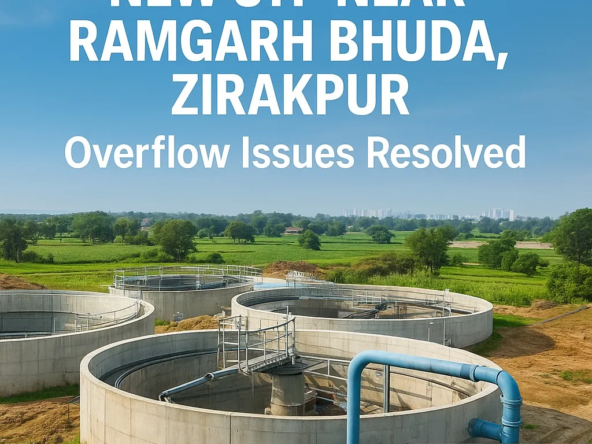How RERA Can Solve Common Problems for Buyers in India
The real estate sector in India has long been plagued by issues such as project delays, lack of transparency, misleading advertisements, and unfair builder practices. To address these concerns, the Indian government introduced the Real Estate (Regulation and Development) Act, 2016, commonly known as RERA. This landmark legislation aims to protect homebuyers’ interests, ensure accountability, and promote transparency in the real estate market. Let’s delve into how RERA has significantly improved the homebuying experience in India by solving some of the most common problems faced by buyers.
1. Ensuring Timely Project Completion
One of the biggest concerns for homebuyers has been project delays. Prior to RERA, developers frequently failed to complete projects on time, leaving buyers in financial and emotional distress.
How RERA Solves It:
- Developers must register their projects with the RERA authority and provide realistic timelines for completion.
- Strict penalties are imposed on builders who fail to deliver projects on time.
- If a developer delays possession, buyers are entitled to compensation or a full refund with interest.
2. Transparency in Transactions
Many buyers have suffered due to a lack of transparency in real estate deals. Developers often provided misleading information about project layouts, approvals, and amenities, leading to disputes post-purchase.
How RERA Solves It:
- Builders must upload project details, including layout plans, approvals, and progress reports, on the respective state RERA website.
- Buyers can access this information to make informed decisions.
- Any deviation from the promised plan can lead to legal action against the developer.
3. Protection from Misleading Advertisements
Before RERA, developers used deceptive marketing tactics to attract buyers, making false claims about carpet area, facilities, and completion timelines.
How RERA Solves It:
- Developers can only advertise projects registered under RERA.
- Any discrepancy between the advertisement and the actual project can lead to legal penalties.
- Homebuyers can file complaints if they feel misled by promotional campaigns.
4. Standardization of Carpet Area Calculation
One of the biggest issues for buyers was the inconsistency in calculating the carpet area of apartments. Some developers included external walls, balconies, and even common areas in the calculation, misleading buyers about the actual usable space.
How RERA Solves It:
- RERA defines ‘carpet area’ clearly, ensuring a standardized calculation.
- Developers must sell properties based on carpet area, not super built-up area.
- This eliminates discrepancies and ensures buyers get what they pay for.
5. Protection from Fund Diversion
Earlier, developers often used funds collected from buyers for one project to finance another, leading to financial mismanagement and project delays.
How RERA Solves It:
- Builders must deposit 70% of the project funds received from buyers into a dedicated escrow account.
- These funds can only be used for the construction and land costs of that specific project.
- This prevents fund diversion and ensures timely project completion.
6. Grievance Redressal Mechanism
Before RERA, homebuyers had limited legal recourse when they faced issues with developers. The legal process was cumbersome and time-consuming.
How RERA Solves It:
- Each state has a RERA authority to handle disputes efficiently.
- Buyers can file complaints online, and RERA ensures a timely resolution.
- If unsatisfied with the decision, buyers can appeal to the Real Estate Appellate Tribunal.
7. Regulation of Builders and Real Estate Agents
Many unscrupulous builders and agents previously exploited buyers due to the absence of strict regulations.
How RERA Solves It:
- Builders and real estate agents must register under RERA before conducting transactions.
- Failure to comply can result in hefty fines and debarment from the sector.
- This improves accountability and protects buyers from fraudulent practices.
8. Fair Pricing and Prevention of Hidden Charges
Hidden charges and arbitrary price escalations were common in the pre-RERA era, leading to financial stress for buyers.
How RERA Solves It:
- Developers must provide a detailed breakdown of costs with no hidden charges.
- Price escalations are not allowed unless mentioned in the agreement.
- Buyers are protected from unexpected financial burdens.
9. Right to Compensation for Structural Defects
Many homebuyers faced issues related to poor construction quality and structural defects post-possession.
How RERA Solves It:
- Developers are liable to fix structural defects in the property for five years after possession.
- If issues arise, buyers can demand free rectifications.
- This ensures quality construction and enhances buyer confidence.
10. Ease of Project Completion Tracking
Before RERA, tracking the progress of real estate projects was challenging, and buyers were often kept in the dark.
How RERA Solves It:
- Developers must regularly update project status on the RERA website.
- Buyers can monitor construction progress in real-time.
- This enhances transparency and keeps developers accountable.
Conclusion
The introduction of RERA has brought a paradigm shift in the Indian real estate sector. It has empowered homebuyers by ensuring transparency, accountability, and fairness in real estate transactions. By addressing the common issues faced by buyers, RERA has restored confidence in the housing market and provided much-needed legal safeguards. However, while RERA is a powerful tool, its effectiveness depends on its proper implementation and awareness among buyers. Thus, prospective homebuyers must familiarize themselves with RERA regulations and leverage its provisions to make informed decisions and protect their rights.



